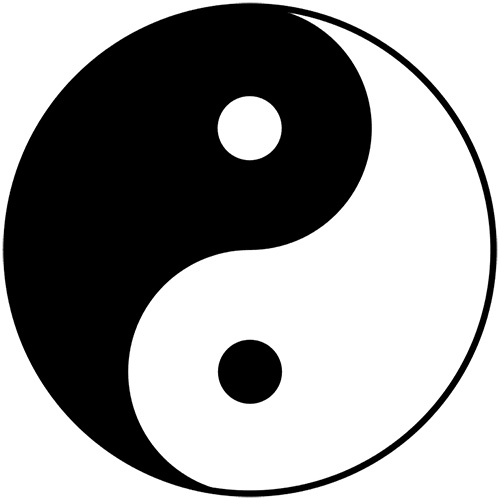If you have been watching the Winter Olympics from Beijing, you may have noticed that at each venue being used the participating nations’ flags flutter on poles.
One such flag belongs to the Republic of South Korea.
There is within the design of the flag a red and blue circle in the middle of the flag. The circle is divided into two parts, each of which resembles a comma.
The upper, red part represents the forces of yang (yang in Chinese as well), and the lower, blue part represents the forces of um (yin in Chinese).
The classic Chinese symbol is drawn in black and white – Yin, is the dark side and Yang is the light side. Interestingly each has an “eye” of the other as a part of their form.
The yang and yin together form the tao in Chinese philosophy, signifying the perpetually changing opposite yet complementary forces or principles embodied in all aspects of life: light and darkness, good and evil, active and passive, masculine and feminine.
The thick round part of each comma represents the beginning of all things, and the tail section represents the end so that where the yang begins, the yin disappears and vice versa. [Hold onto this image as you read this morning’s Gospel – as I begin to love my “enemy”, the “enemy” disappears/reappears as love!].
The symbol and philosophy it represents is found in the I-Ching, or The Book of Changes, one of the oldest Confucian classics on Chinese cosmology. (Exact dating is not easy, however its compilation in its current form is dated to the last quarter of the 9th century BC.
A copy of the text in the Shanghai Museum of bamboo and wooden shoots shows that the text was used throughout all levels of Chinese society in its current form by 300 BC.
Yin and Yang are viewed as two basic opposing forces – complementary opposites. Everything is imagined to have both Yin and Yang aspects which constantly interact.
In the West, the I Ching was discovered in the late 17th century by Jesuit missionaries in China.
The Gospel for this Sunday, (Luke 6: 27 -38) has a strong element of Yin and Yang about it, “do good to those hate you.” (v. 27), “love your enemies.” (v.35).
If we pause for a moment and consider that the enemy may not be “outside” of me, may not be the “other”, rather is in fact my own self – you know those parts of me I keep stored away in a closet, hoping only I have a key, only to find the person holding up the line at the supermarket, or the person who has not done their allotted task on time, or the young mother coming in late to Sunday Eucharist with a snivelling and crying child, or old John O’Grady who always seems to drop the kneeler on the concrete floor from a height of 6ft – each of these seems to have somehow found a key to my closet, or maybe (surely not!), I left the door unlocked and slightly ajar!!
In Matthew’s gospel we read the parable of the weeds among the wheat (Mtt. 13:24 – 30).
Those familiar with the parable will recollect the servants’ question to the householder, ‘Do you want us to go and pull them up?’, and the reply, “‘No,’ he answered, ‘because while you are pulling the weeds, you may uproot the wheat with them.
Let both grow together until the harvest.
At that time, I will tell the harvesters: First, collect the weeds and tie them in bundles to be burned; then gather the wheat and bring it into my barn.’”
The weeds and wheat are complementary opposites (yin/yang) best left to grow together.

